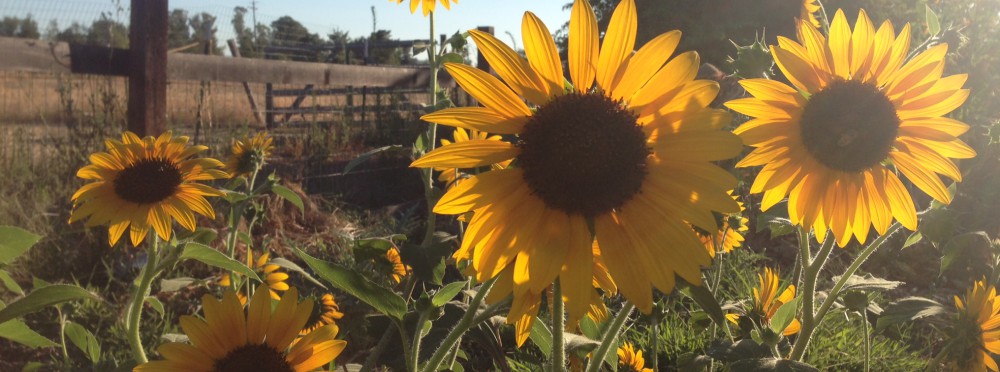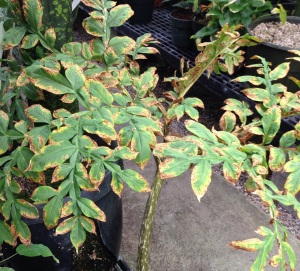Brrrrr!! It’s been cold outside. My foray into my garden the last few days has been to check for broken pipes. I try and do find the beauty in frost covered leaves but am also saddened by what, the day before, was a beautifully blooming Ruellia now reduced to melted mush. This is par for course with gardening however. I need and appreciate the dismall to revel in the rebirth of spring. Each spring I am giddy with excitement as dormant plants reemerge and seedlings push out of the ground. It never gets old. So I welcome the frost and enjoy the feeling of nostalgia when the mist sets in. HOWEVER with that aside I do not enjoy leaking pipes. Saturday it was the gauge on my well. Luckily the local local hardware store (they give out free mini espressos-yummy) had the replacement part. So far so good. First step was to turn power to the well off. Done. But wait, water is still coming out. I turn a few more valves off (in this case more is better right?) and still water is running. I decide it’s only a 1/4″ hole so how big could the geyser be? Well, big enough to soak me with freezing cold water!! I thread the new gauge in quickly – thank goodness. So this is bad enough but add insult to injury the neighbor’s dogs come running over, three chihuahua size yappy, barky things. And they start biting me!! I have to walk them back over to their house with them biting at my calves. Now I have nice bruises to remember the experience. So besides fixing pipes, protecting plants from cold and enjoying the Salvador Dali-esque look to my garden I am not doing much. This is the perfect time to give my indoor plants some attention.

After having ruined one wood floor at our previous home, I decided I would attach a plant room to my new house. The builders kept calling it the ‘grow room’ – wonder what they thought I was going to grow?? “hydroponic tomatoes” perhaps? I like to think I created my own mini-botanical conservatory with all the plants I love. Like in all aspects of gardening you learn as you go. I thought I would have enough natural light but ended up having to put two grow lights in. What a difference this has made! The lights of choice are a 400 Watt Metal Halide light and an LED light I traded with a friend. The LED light puts off a nice purplish glow so it also works as a great landmark for people looking for my house. By being attached to the house, I regulate the temperature and humidity by opening the door to the house in the winter. In the summer I open the door to the house but also open the skylights to vent out the heat. Adding a mix-rite injector makes fertilizing super easy. Some women buy clothes, I buy greenhouse equipment.
I have never been a ‘collector’ of one type of plant. My ADD doesn’t allow for that. No, seriously. And because I love various plants for each of their unique characteristics. At the UC Davis Botanical Conservatory we aim for species and not plants of hybrid origins. At home however I can grow all the big and gaudy hybrid orchids I want. I love the way my Blc specimens look and smell (much easier to say than Brassavola x Laeliocattleya (Laelia x Cattleya). But to show I’m not just into big and gaudy, I even manage to have a subdued Paphiopedilum growing happily. They normally prefer cool conditions but one I purchased at Gold Country Orchids called Paphiopedilum Western Sky ‘Big Ben’ is happy in my warm summer conditions. Yeah it’s not as spectacular as others but it makes me happy!

Foliage is important to me as well. The iron-cross Begonia, Begonia masoniana cannot be beat for color and texture! This plant is relatively easy to grow. Bright light and drying out slightly between watering will make this plant happy. Propagation can be achieved by divisions or leaf cuttings. I do recommend non-tap water however. Salt burn is it’s only negative.

I have a few ferns in the room but by far my favorite is the Maidenhair fern, Adiantum capillus-veneris. When I’m gone I have people ( hi brother!) watering for me I always expect it to be shriveled when I get back. however, I don’t stress about that because it’s very forgiving. The foliage will die back and re-sprout if not neglected for too long. This fern also does really well in outside shade in the Sacramento Valley. The specimen I have is outgrowing its pot so I plan on dividing it soon. My favorite tool of choice for dividing root balls is a serrated knife. Thus I have none in my kitchen!

I do have a thing for Hoyas for some reason. Could be that they bloom a lot or that their flowers look fake! The Hoya lanceolata ssp. bella, one of my absolute favorite flowers, reminds me of play jewelry I had as a child. I’ll take flowers that look like fake jewelry but hubby dear don’t try the opposite! Another favorite, Hoya pubicalyx ‘Red Button’, is thriving in my plant room. The fuzzy, maroon flowers appear almost non-stop and smell delicious at night. I recently purchased the Hoya lauterbachii. This Hoya has individual flowers 2″ across and with 8 to a cluster. The inflorescence can be as big as a soccer ball! So far the plant is thriving. Can’t wait for flowers!! I have found that higher light is required for good blooming for almost all Hoyas, they almost need to sunburn a bit. Another great attribute is they are some-what succulent so they can go quite a long time between waterings. I have been growing Clerodendrum thomsoniae for many years. This vining shrub will continuously bloom at any size. At the greenhouses at work we constantly cut them back to no more than a foot tall and they still bloom. Bright light and medium amounts of moisture and this plant will thrive!

I can’t stress enough how important good potting soil is. Most of the potting soil sold at nurseries is somewhat crap! There are a few exceptions. Black Gold’s cactus mix is as close to the potting soil we use at the conservatory and what I use at home. Our mix is made up of 60% 5/16 red lava rock, 17% coarse sand, 17% peat moss and roughly 17% redwood compost and a few amendments to balance ph and nutrients such as triple super phosphate and dolomitic lime. Less organic matter means less soil volume is lost to breaking down. For this reason, transplanting is not needed as often. The red lava creates great drainage and aeration. We recently replaced pumice with the red lava due to availability and the fact pumice eventually becomes alkaline. The peat retains moisture and creates an acidic base. I still choose to plant my orchids in orchid bark. At the Botanical Conservatory we have moved our collection of Paphiopedilums, Phalaenopsis and other orchids into the red lava. With so many different people doing the watering it is more forgiving with fluctuations in water.
I try to also plant in terra-cotta (clay). Ever notice the white build up on the clay pots? That’s salt leaching out. Guess where that salt stays in plastic pots? Yep, that’s right – in the root ball. This is why deep watering is so important. Watering until water runs out the bottom of the pot helps to purge the soil of salts. It also encourages a bigger healthier root system. Roots grow where water flows. Clay and ceramic pots also insulate better. This is uber important when pots get a lot of sun. Plastic pots cook in the heat and roots can be severely damaged or killed off by this heat.
So when the well breaks and the dogs bite…. these are a few of my favorite …Plants!!










